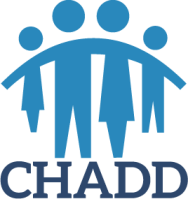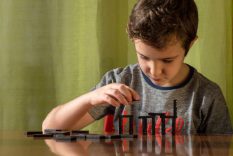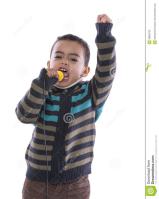
Learning Differences:
Gifted children suffer when undue expectations exist without consideration of other unique characteristics that define their day-to-day experience. Children identified with unintentional lables become deficit-focused when their strengths are not seen. Twice exceptional children experience a tug-of-war depending on what combination of strengths and challenges they display. Recognizing strengths and supporting the challenges of our children goes a long way toward helping them increase their self-esteem and reach their potential.
Self-esteem lays the foundation for success. So it is important to understand and do better for our twice exceptional children have abundant and limitless potential. Self-esteem is negatively impacted by this lack of understanding, which gets translated into negative reactions and interactions with adults-parents, educators and professionals-who live and work with these children.
Potential Strengths for Kids with Learning and Attention issues
Another place to look for clues to potential strength are looking at patterns of strengths often associated with different learning skills. Obviously, these traits don’t apply to every kid with learning differences, but consider it as food for thought as you’re exploring your own child’s strengths.
ADHD
ADHD is often associated with non-linear thinking. This can yield an abundance of creativity and innovation. Other traits often associated with ADHD include strong sense of humor, musical or artistic talent, adventurous, bravery, curiosity, charm, charisma, tenacity, and independence.
Dyslexia
Strengths; spatial reasoning; puzzle solving; conversationalist; abstract thinkers; thinking outside the box; critical thinkers; seeing the big picture, problem solving, team oriented, persistence.
Dysgraphia
Potential strengths, however, people with dysgraphia are often great listeners and storytellers, problem solvers, and socially savvy, political giants, motivators, starters, artistic.
Too Many Schools Are Misdiagnosing Dyslexiang
It pains Tim Odegard that four decades after a misguided approach to diagnosing dyslexia kept him from getting help in school, thousands of children across the U.S. are needlessly suffering for the same reason.
During the initial weeks of first grade Odegard's struggles with reading went undetected as he memorized words that classmates read aloud before him. The strategy worked so well that his teacher moved him to the position of “first reader.” It then became apparent that the six-year-old not only wasn't the strongest reader in the class—he couldn't read at all. The teacher dispatched him to a low-skill group. “It just kind of went downhill from there,” Odegard, now 47, recalls.
A “gifted” diagnosis is often solely based on intelligence and achievement. Identifying giftedness according to these criteria alone assumes that the defining characteristics of giftedness are ability and intellect. Gifted children often are asked “If you’re so good at doing that, why can’t you do this?” Gifted children with ADHD often show heightened intensity and sensitivity, but they are set up to fail in a system that only recognizes and expects intellectual proclivity without consideration of their emotional needs.
What is it like to grow up with dyslexia? What are the benefits of having dyslexia? How do you leverage these benefits in your schooling, in your work, and in your everyday life? The Power of Dyslexia presents the experiences of a child growing up with dyslexia. A child faces the challenges that most dyslectic children face in school. Over time, the child learns how to face these challenges and how to leverage the advantages that dyslexia provides them. These advantages or Dyslectic Super Powers include; high volume information capture, 3-D memory management, advanced analytical ability and an outstanding level of creativity. It is very important that people with dyslexia develop an understanding of how their brain functions and how they can develop these Super Powers to live their life to its fullest.
What Are Strengths?
The concept of strengths can be a tad squishy. Essentially they are skills, abilities or talents that are personal to an individual that have some potential value in the world. Depending on context, the concept of strengths can span many different categories. Spanning the realms of the emotional, intellectual, physical and more. According to career-oriented sites like Monster.com, employers seek strengths such as enthusiasm, trustworthiness, creativity, discipline, patience, respectfulness, determination, dedication. In the intellectual realm, schools and colleges may focus on strengths such as attention to detail, creativity, critical thinking, enthusiasm, problem-solving, visualization, perseverance, flexibility. And then we also have the traditional character strengths of honesty, kindness, being helpful, empathy, loyalty, hard worker, resilient, independent. According to strength-based psychologists, strengths are things that you are good at doing or could be good at doing, that you enjoy doing (energize you), and that can benefit or contribute to something beyond yourself.
What Are Some Examples of Strengths?
You can find many different versions of a list of strengths. But generally speaking, strengths are often evaluated in different categories or buckets. Personal, emotional, social, physical, intellectual/academic, and creative or artistic. The social/emotional bucket generates qualities such as belonging, friendship, kindness, curiosity, confidence, courage, hope, happiness, independence, resiliency, compassion, playfulness, delayed gratification, spirituality. The personal bucket generates traits such as optimism, generosity, energy, empathy, honesty, organization, planning, communication, memory, curiosity, powers of observation, listening, leadership and charisma.
How To Identify Strengths
Strengths are a combination of talents, knowledge and skills. According to Dr. Donald Clifton, dubbed the Father of Strength Based Psychology by the American Psychological Association, “talent naturally resides within you, while skills and knowledge must be acquired.” So start the search for potential strengths by looking for areas of natural talent. And “talents” can cover a wide range of activities, not just the kind of talents you would see in a talent show. Being able to connect with people quickly is a talent. The tendency to be undaunted by obvious risks. Organizing and planning complex activities with ease. Communicating ideas in an understandable way. Being able to motivate, influence and lead others can each be an independent talent. So, how can you recognize your child’s strengths? Here are some sources for potential clues.
How Do I Know My Child’s Strengths?
What’s considered a strength can vary across context and setting. Familiarize yourself with both some common and uncommon strength areas, then launch your investigation. Here’s a roadmap to potential strength areas:
- Natural attractions & affinity – Activities or experiences that your child gravitates to without prompting or is eager to engage. So, for instance, if he sees that someone needs help does he automatically offer assistance without prompting. Or, when it’s time for a group project, is she always the one who jumps in to coordinate or moderate?
- Natural learner – Are there activities where your kid seems to pick up things very quickly and with ease. Such as chess, or musicals.
- Epic joy – Moments when your child has boundless enthusiasm. Activities that he is always excited to do.
- Limitless attention – Activities that are so engrossing that time ceases to exist – at least to him. Some kids with ADHD may experience the phenomenon of hyperfocus. The repeated object of hyperfocus could be clue to a potential strength area.
Ask Others Who Know Your Child Well
Gather information about your child’s strengths from his or her teachers, other parents, and relatives. Hearing from others what your child’s strengths are can be an eye-opening experience. They might see or observe things that you miss.
Ask Your Child
Your child may have his or her own idea of what their strength areas are. Depending on the age and self-awareness of your child, this may or may not track with reality. But, at the very least, it gives you a starting point for investigation. If your child doesn’t really have the ability to answer questions like that, there are other concrete questions that you can ask that will lead to helpful information. Such as: “What did you do that went well today?” A response to a question like that can yield lots of insight into potential strength areas. So, for instance, perhaps your child was pleased that he was finally able to figure out something in math that he didn’t understand when he asked his teacher for help; or perhaps she was pleased that she got to pick the game or toy or story during social circle and all the other kids loved it. These responses in context could suggest strength areas of perseverance, assertiveness, communication or empathy.
Examine Your Own Weaknesses
Your child could excel at something that you are terrible or which you hate or dislike. Avoid projecting your likes, dislikes and skill sets on your child. Consider whether your own biases/preferences are blocking him from reaching the heights of his natural abilities and interests.
Look For Hidden Strengths
Sometimes the path to identifying a child’s strengths is by examining perceived weaknesses/problem areas. This could be a potential strength that is being expressed in a negative manner but that could be re-directed/channeled in a positive manner. The weakness could be the extreme version of a positive strength that needs some moderation.
- The child who is obstinate, constantly argues, badgers and harps — deep well of determination
- The child who is bossy and dominating — confidence or leadership
- Glass half empty, negative and critical — analytical, observant
Keep a Strength Journal
If you are having trouble identifying or keeping track of your child’s strengths, consider a strength journal or diary to jot down observations that you make. Taking note of your child’s daily activities can help you observe strengths. Some of the things that you can put in a strength journal include:
- What things does your child enjoy doing every day?
- When given a choice, what does your child choose?
- How does she spend her free time?
- Is she kind to others? How does she express this?
- Does he stay focused on painting or drawing for long periods of time?
How To Nurture Strengths
Here are some tips to help foster your child’s abilities. Lea Waters, an Australian psychologist who writes about strength-based parenting, recounts this insightful anecdote about Steven Spielberg’s childhood. Spielberg was not diagnosed with dyslexia until late into his adult life – age 60. As a child, he struggled through school and was often bullied. He found refuge in filmmaking, and his mom actively supported his interests, and gave him opportunities to explore his strengths. So, for example, when he wanted to make a home moving involving a volcano, she helped him experiment with exploding baked beans in the backyard. Are you the mom who helps bake the beans or the one who instinctively puts the kibosh on backyard explosions?
Devote Time and Attention on What Actually Works
Your child doesn’t have to be good at everything. Figure out the areas where “good enough” is acceptable and spend more time and attention on areas of positive strength. The fertile ground likely to yield the best fruit. Does math homework bring your child to tears? Spending hours upon hours drilling math facts is probably not the best use of your time. In a world filled with cheap calculators, not being able to instantly recall the product of 8 times 9 will not be a lifetime burden. Accepting “good enough” for areas that will never be an area of strength frees up time to grow the ones that can be awesome. Taking pen to paper is just one way to tell a story. So while a child with dysgraphia may struggle to communicate his or her thoughts in a handwritten essay. That same child may astonish when freed to express himself using a keyboard, voice technology, or the language of film. So, rather than devoting hours practicing rote penmanship, spend some time learning keyboarding instead.
Lean In Towards Areas of Strength
You know that notion of 10,000 hours — that it takes 10,000 hours to become an expert in something. You will get much farther spending that time practicing or honing skills and traits that you are good at and like rather than those you struggle with and hate. People who rise to the top of their field have usually capitalized on their strengths rather than focusing on eliminating or shoring up weaknesses. To return to the Steven Spielberg example: Reading the written word is not a strength area for him. By his own report, it takes him twice as long to read a script as most other people. Perhaps he would be a faster reader today, if his mom had made him practice his phonics at the kitchen table rather than practicing stagecraft in the backyard. But it seems highly unlikely that those extra hours building up reading skills would have led to the same phenomenal outcomes.
Help Your Child Develop Self-Awareness
Your child probably has plenty of hidden strengths, which are things that they don’t recognize as a strength. Notice strengths about your child that they might not see as a strength. Help your child recognize that strengths are more than just being a good athlete or having an aptitude for math. Teach your child how to identify their own strengths and weaknesses. This will help them develop a vocabulary for self-awareness. They will then learn to put a name to their strengths and talents.
Talk About and Document Successes
When your child is successful at something, talk about it. Instead of simply saying “great job,” help your child identify what things made her succeed. Those things are strengths. So, if she made the track team, talk about how she did not give up even when things got very difficult. She is persistent, which is a strength. Take time to document and memorialize moments of strength. This helps reinforce your child’s positive self-image in her own eyes. As well as yours. This doesn’t necessarily have to be “achievement” oriented, or a social media brag wall. It could be something simple. Like recording short videos of your child when he is doing something he loves.
Here are a some Clinical Definition: Dyslexia, Dysgraphia, Dyscalculia, and AD/HD (Attention-Diversity/Hyperactive Dynamics (we changed the wording on ADHD to recognize the gift of having 3-dimensional/comprehension)
Dyslexiais a specific learning disability that is neurological in origin. It is characterized by difficulties with accurate and/or fluent word recognition and by poor spelling and decoding abilities. These difficulties typically result from a deficit inthe phonological component of language that is often unexpected in relation to other cognitive abilities and the provision of effective classroom instruction. Secondary consequences may include problems in reading comprehension and reduced reading experience that can impede the growth of vocabulary and background knowledge.
It decreases the processing of graphic symbols, especially those related to language. Children who have dyslexia may experience late language development and have problems learning how to write and spell when they enter formal schooling. Symptoms include difficult literacy skills, reversed letter and word sequences, and personal handwriting. The good news is that if the student is diagnosed with dyslexia early enough, more than likely they will learn to read.
Therefore, dyslexia is a specific learning disability that appears to be based upon the brain and its functioning. It appears that dyslexia runs in families.Individuals with dyslexia have difficulty with processing and manipulating the sounds in a spoken language. This is related to the ability to read words accurately and fluently. Individuals with dyslexia will also have difficulty with spelling. Some of the consequences of not reading accurately or fluently and thus having fewer reading experiences may include problems with reading comprehension and vocabulary.
What is Dysgraphia?
Dysgraphia is a learning disability that is marked by difficulty in performing handwriting in addition to having issues with fine motor skills. People who suffer from dysgraphia have problems forming letters correctly, putting thoughts on paper, zipping a jack, tying their shoes, etc. Many students who suffer from dysgraphia often develop solid verbal skills to compensate for their handwriting issues. Because little research has been conducted on this learning disability, it is often misdiagnosed.
What is Dyscalculia?
Dyscalculia is a learning disorder that is marked by an inability to learn foundational math skills. Many people with this disability can learn very advanced mathematics concepts and principles, but it is hard for them to process formulas or do elementary math computations. Many people with this disorder also struggle with visual-spatial relationships or processing what they hear. Dyscalculia can differ from person to person.
What is Dysnomia?
Dysnomia is a learning disability that is marked by difficulty in recalling words, names, numbers, etc. from memory. The real problem stems from the fact that the words that they can not remember are essential, as they are needed for oral or written expressive language. The person may provide a detailed description of the word in question but is unable to recall its exact name. Dysnomia is often misdiagnosed as expressive language disorder. If your child is exhibiting any of these symptoms, take them to see a neurologist as soon as you can.
What is Dyslexia?
What is (ADHD)? It is a chronic condition that affects millions of children and often continues into adulthood. ADHD includes a combination of persistent problems, such as difficulty sustaining attention, hyperactivity and impulsive behavior.
Children with ADHD may also struggle with low self-esteem, troubled relationships and poor performance in school. Symptoms sometimes lessen with age. However, some people never completely outgrow their ADHD symptoms. But they can learn strategies to be successful.
While treatment won't cure ADHD, it can help a great deal with symptoms. Treatment typically involves medications and behavioral interventions. Early diagnosis and treatment can make a big difference in outcome.
Symptoms
The primary features of ADHD include inattention and hyperactive-impulsive behavior. ADHD symptoms start before age 12, and in some children, they're noticeable as early as 3 years of age. ADHD symptoms can be mild, moderate or severe, and they may continue into adulthood.
ADHD occurs more often in males than in females, and behaviors can be different in boys and girls. For example, boys may be more hyperactive and girls may tend to be quietly inattentive.
There are three subtypes of ADHD:
- Predominantly inattentive. The majority of symptoms fall under inattention.
- Predominantly hyperactive/impulsive. The majority of symptoms are hyperactive and impulsive.
- Combined. This is a mix of inattentive symptoms and hyperactive/impulsive symptoms.
Inattention
A child who shows a pattern of inattention may often:
- Fail to pay close attention to details or make careless mistakes in schoolwork
- Have trouble staying focused in tasks or play
- Appear not to listen, even when spoken to directly
- Have difficulty following through on instructions and fail to finish schoolwork or chores
- Have trouble organizing tasks and activities
- Avoid or dislike tasks that require focused mental effort, such as homework
- Lose items needed for tasks or activities, for example, toys, school assignments, pencils
- Be easily distracted
- Forget to do some daily activities, such as forgetting to do chores
Hyperactivity and impulsivity
A child who shows a pattern of hyperactive and impulsive symptoms may often:
- Fidget with or tap his or her hands or feet, or squirm in the seat
- Have difficulty staying seated in the classroom or in other situations
- Be on the go, in constant motion
- Run around or climb in situations when it's not appropriate
- Have trouble playing or doing an activity quietly
- Talk too much
- Blurt out answers, interrupting the questioner
- Have difficulty waiting for his or her turn
- Interrupt or intrude on others' conversations, games or activities
Typical developmental behavior vs. ADHD
Most healthy children are inattentive, hyperactive or impulsive at one time or another. It's typical for preschoolers to have short attention spans and be unable to stick with one activity for long. Even in older children and teenagers, attention span often depends on the level of interest.
The same is true of hyperactivity. Young children are naturally energetic — they often are still full of energy long after they've worn their parents out. In addition, some children just naturally have a higher activity level than others do. Children should never be classified as having ADHD just because they're different from their friends or siblings.
Children who have problems in school but get along well at home or with friends are likely struggling with something other than ADHD. The same is true of children who are hyperactive or inattentive at home, but whose schoolwork and friendships remain unaffected.









